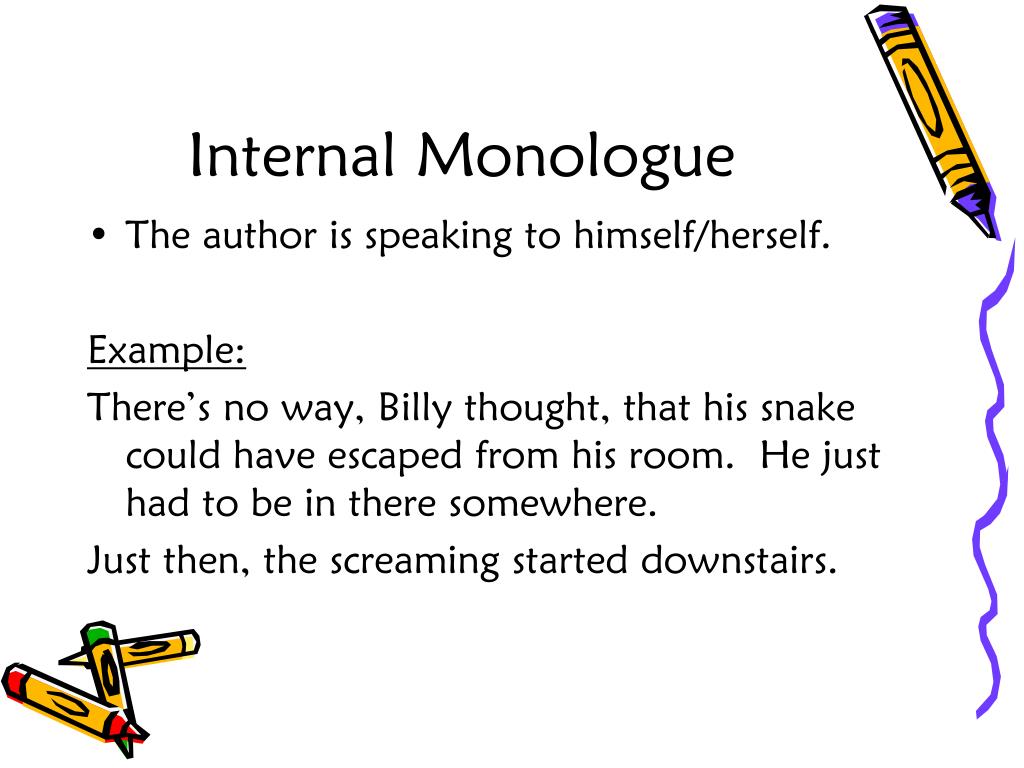

Research has also found that people use more inner speech when they are under pressure, for example when you are practising the answers to questions for a job interview, or if you are an athlete who is trying to focus.Īnd then there are those who do not experience inner speech at all. Some people experience continual inner speech while others experience less inner speech. A person with better developed verbal skills will be more inclined to have a more wordy inner voice than somebody with less language development.
#Internal monologue full
You can also sometimes use full sentences while at other times you rely on a shortened wordplay that would be meaningless to somebody else.Įxperts say children can make use of an inner voice from as young as five years, and some studies suggest that toddlers can use a form of inner phonetics from the age of 18 months.Īccording to experts inner speech is not a sign of intelligence. The voice could, for instance, sound angry or worried. You are aware of its tone and intonation. According to statistics only 26% of all people experience inner speech.Įxperts say with inner speech you virtually “hear” your inner voice. New studies indicate that, even if you say you think in words, this is not necessarily so.

But – and this is the real brain breaker – did you express it in words or did you experience it more like a wave of existential fear?įor a long time it was accepted that an inner voice was simply part of being human. When you woke up this morning your first thought probably was something like “here we go again”.


 0 kommentar(er)
0 kommentar(er)
